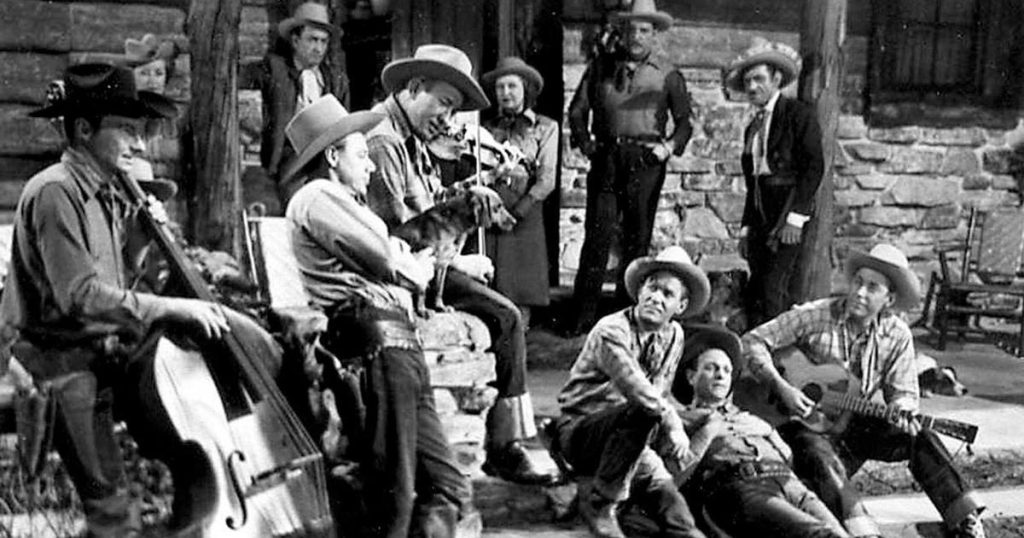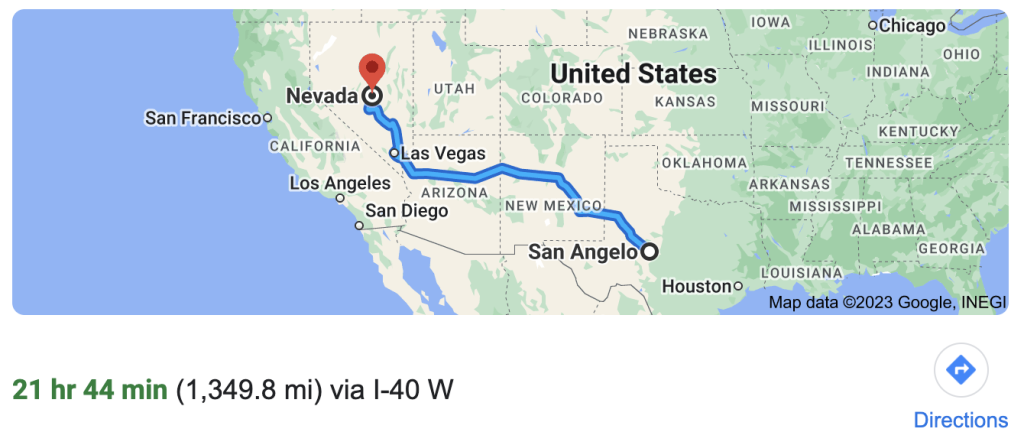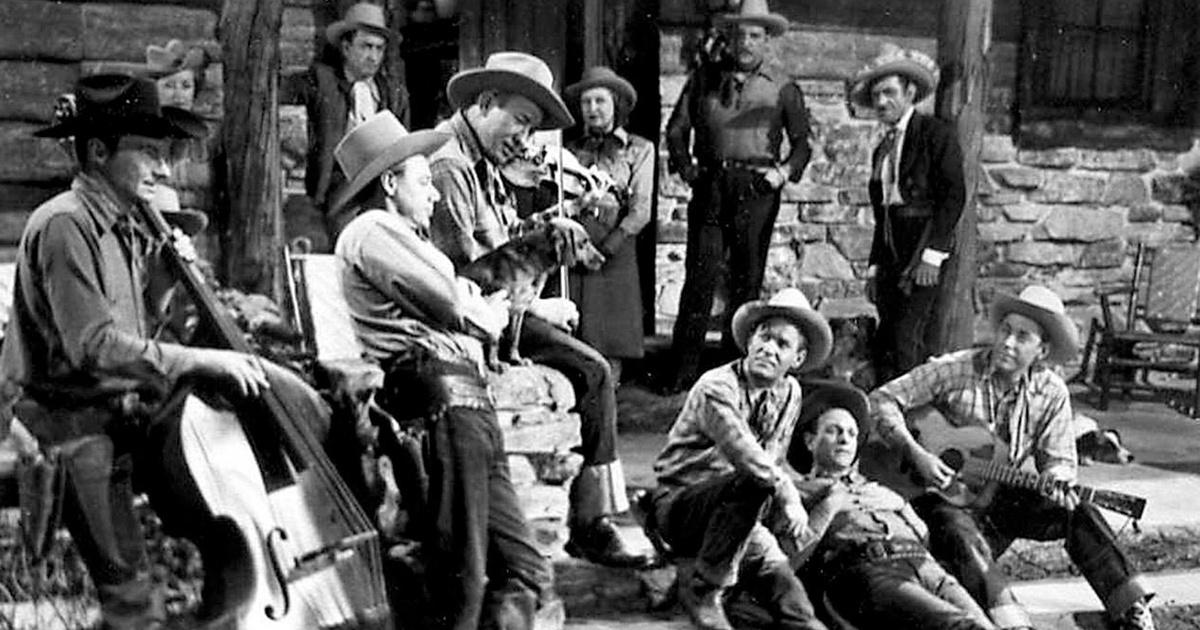Summary
In the 1947 film Bells of San Angelo, Lee Madison (played by singer and actress Dale Evans) sings the original song “I Love The West”. Between 1940-1950, Evans was the leading lady for Hollywood’s most iconic musical westerns which glorify a false narrative of cowboy culture. The cowboys that are portrayed in the film are much different than the Tejano cowboys of Texas’s true origins, which is telling of the deliberate erasure of history, and the political and social conflicts that Tejano, black, and indigenous people had to face at the hands of white (anglo) texans.
Texas Post World War II

The film Bells of San Angelo (1947) followed many social and political trends at the time of its release. This film was released two years after World War II ended, which was the catalyst for Texas’s social, economic, and political culture had been climate to shift dramatically. Texas changed from rural and agricultural state to an industrial one, resulting in a sudden division of political parties. One stood by its southern Democratic heritage, and the other were consistently electing Republican officeholders. Feminism was also on the rise, creating more opportunities for women to modernize and reject the strict gender roles they were once forced into. However wonderful this is, the early days feminism was exclusive in its own right. The rights of black, tejano, and indigenous Texans were still being debated by the federal government, who upheld many years of segregation, slavery, and bigotry. Unfortunately, this wave of feminism was for only white women, which is shown in the films treatment of leading lady Lee Madison, black supporting characters, and the mention of indigenous people in the song “I Love the West”.
The Bells San Angelo- Fact or Fiction?

Despite its title, San Angelo has very little to do with the true setting of the film. It is implied that the events take place on the Texan-Mexican border, but as seen by the map below it is nowhere near the border of Texas. In fact, Bells of San Angelo was not filmed in Texas at all. It was shot in Nevada, which is just east of California. One review of the film acknowledges this error but praises the film, writing:
“Bells of San Angelo was filmed in Valley of Fire State Park in Nevada, and the scenery is spectacular. Of course, it looks nothing like San Angelo, Texas, which — by the way — is in the heart of Texas, not anywhere near the Mexican border. But whatever. If you like Roy Rogers, Dale Evans, and Trigger, you’ll love this movie”
Adam Lounsbery, owner of the website “OCD Viewer- Chronicaling popular entertainment from 64 years ago”
Staring its two most famous stars of their time, the writers of the film were successful in telling a story of the “ersatz utopia” of cowboy culture, white feminism, and horses. They had a lot of horses in this movie. Dale Evans plays a character that is representative of feminism in the 1950s-1960s. The name “Lee Madison” is of a writer and investigator, famous for her adventure novels. However, the men in the town expected Lee Madison to be a man. Lee Madison (Dale Evans) does not tell anyone of her real identity, going undercover to gather information that would have not been revealed if she told them of her real name. The plot is progressive in the fact that a successful woman is taking advantage of the fact that they did not think a woman would be a famous writer.
“I Love the West” Analysis
Lyrics I love the West The heavenly, heavenly West In the very heart of me It's so much a part of me And I ever shall return To this land for which I yearn I love the West The heavenly, heavenly West Where the skies are bluer And the gals are truer Where the grass is greener And the varmints meaner Where life is rougher And the men are tougher That's why I love the West And I love the range Oh, gimme the range for a change Where the wind keeps blowin’ And the cactus growin’ Where the sun keeps shinin’ And the gals are pinin’ Where the light is brighter And the boys are brighter That’s why I love the West Where the hero, Strong and silent Keeps the little gal from harm Fightin’ 20,000 Indians Or paying off the mortgage on the farm Yes, I love the West For everythings best in the West Where the days are hotter And the nights are colder Where the young are younger And the old are older Where the high is higher And the wet is wetter Where the dry is drier And the best is better Where a man’s a man And a rootin’ tootin’ Come on the range and comin’ out shootin’
In this song written by Lee Madison, she glorifies the cowboy lifestyle and the adventures they go on. It is also a southern pride song, echoing the mythos that “the south is the best”. She uses “er” adjectives in almost every single line of the song, to not only emphasize the importance and greatness of the west, but to fit into the hollywood style of music that is playful and not complex in vocabulary. This is reminiscent of the song I wrote about last assignment (London Homesick Blues), which is basically saying “this place is the greatest and every other place is small in comparison”. But who is it great for? White/ Anglo Texans, of course. Not the 20,000 Indigenous people being murdered in the second to last verse!
Where the hero, Strong and silent Keeps the little gal from harm Fightin’ 20,000 Indians Or paying off the mortgage on the farm Yes, I love the West For everythings best in the West
This is the verse that shifts the song from a silly “the west is great” song, to a song about just how great it is for white texans. The idealized cowboy, the “lone cowboy”, takes what he wants! He defends the “little gal” from the Native Americans that they stole their land from! It is easy for me to poke fun and point out the inaccuracies of Texan culture and history, but this is still being taught in many schools in Texas and beyond. It takes me back to the conversation we had about the documentation of history, not just of facts and numbers but of motivations. Who is telling the story? What is their bias? What are they leaving out, and why? I think based off of what we have learned and the recent laws that aim to censor the truth in American history, we know the answers to these questions. White supremacy is unfortunately still present in how history is taught, written about, and passed down from generations.
Resources
Horses, Speaking Of. “A Tribute to Roy Rogers and Dale Evans.” YouTube, 21 Aug. 2013, www.youtube.com/watch?v=ydKEkbvrf0M&feature=youtu.be.
—. “A Tribute to Roy Rogers and Dale Evans.” YouTube, 21 Aug. 2013, www.youtube.com/watch?v=ydKEkbvrf0M&feature=youtu.be.
Lounsbery, Adam. “Bells of San Angelo (April 15, 1947).” OCD Viewer, 4 May 2014, ocdviewer.com/2011/05/09/bells-of-san-angelo-april-15-1947.
Popnecker, Porfle. “Dale Evans Sings ‘I Love the West’ (From ‘Bells of San Angelo’, 1947).” YouTube, 14 Jan. 2017, www.youtube.com/watch?v=tpOQ1pqsOkw&feature=youtu.be.
TSHA | Texas Post World War II. www.tshaonline.org/handbook/entries/texas-post-world-war-ii.

